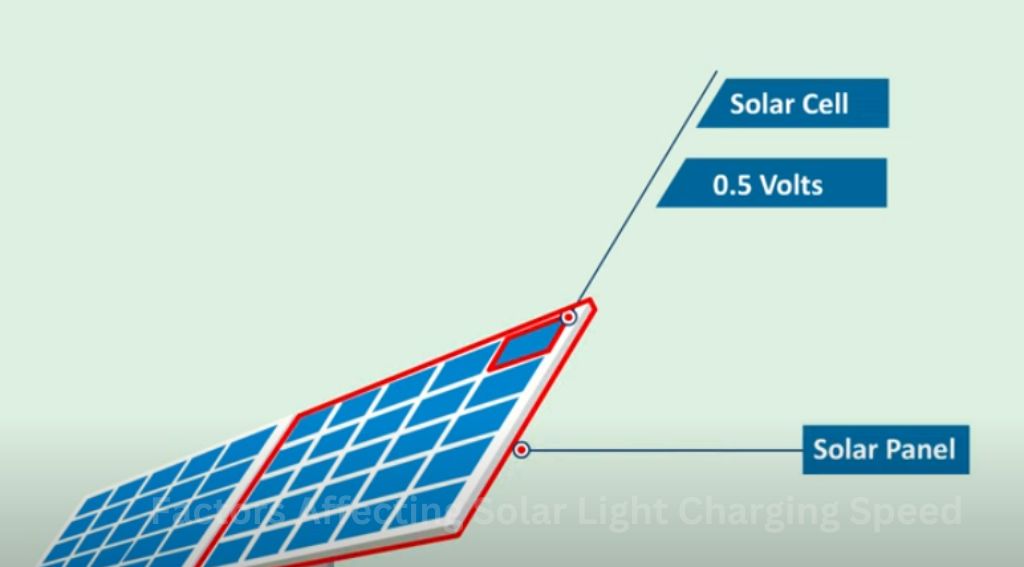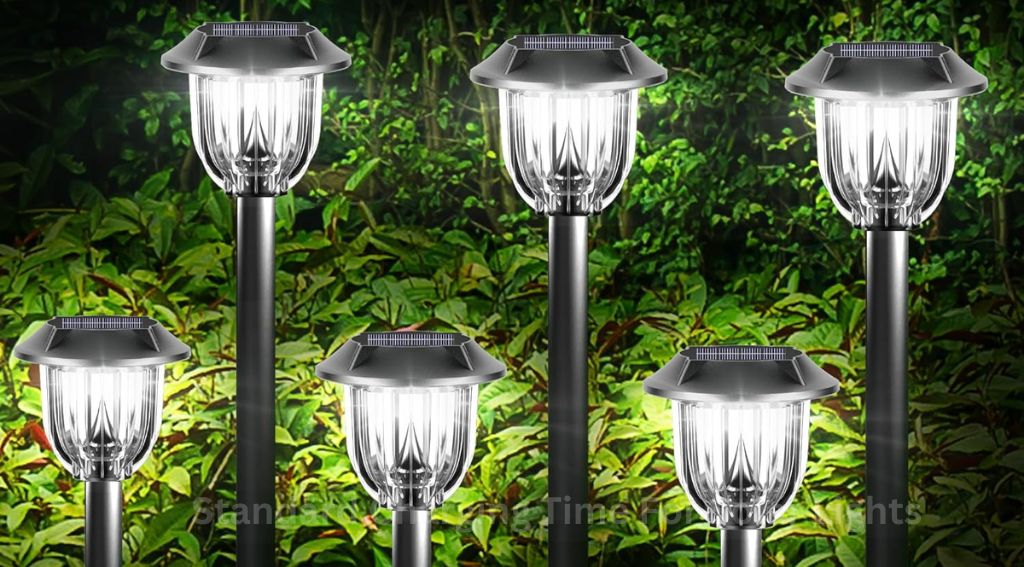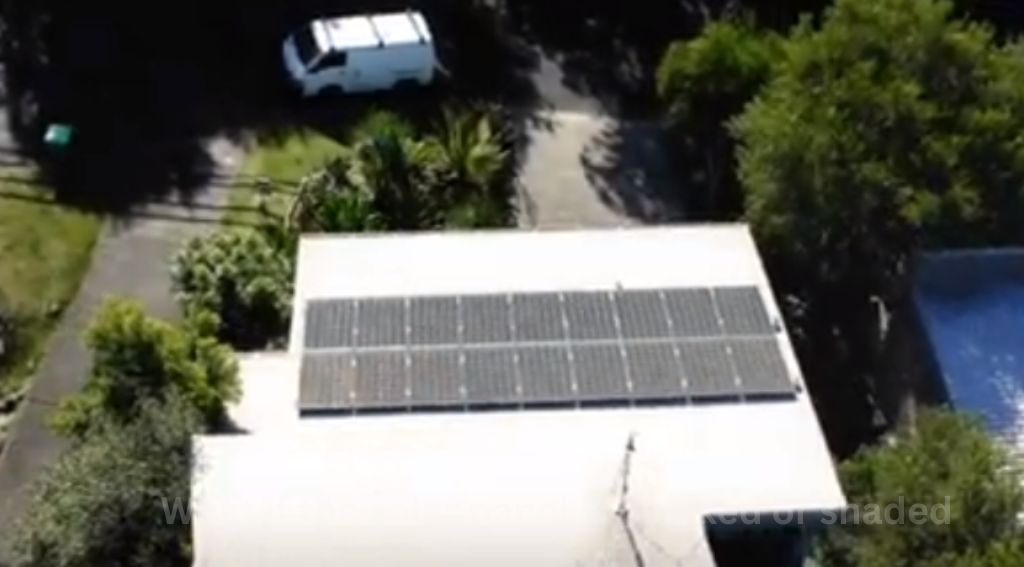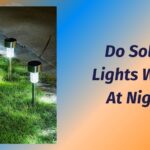How Long Does It Take Solar Lights to Charge? Discover the speed!
Solar lights typically take approximately 6 to 8 hours to fully charge, using sunlight as a power source. Solar lights are an increasingly popular option for outdoor lighting due to their energy efficiency and convenience.
These lights harness the power of the sun to generate electricity, eliminating the need for traditional power sources. But how long does it take for solar lights to charge? On average, solar lights require about 6 to 8 hours of exposure to direct sunlight to fully charge.
The charging time may vary depending on the specific design and capacity of the solar light. Once fully charged, solar lights can provide illumination for several hours, making them a reliable and eco-friendly choice for outdoor lighting solutions. So, if you’re considering installing solar lights, keep in mind the charging time required for optimal performance.
How do solar lights work?
Solar lights are a popular and eco-friendly alternative to outdoor lighting. Not only do they harness the power of renewable energy, but they also offer convenience and cost savings. But how exactly do solar lights work? Let’s delve into the key components and mechanisms behind these ingenious devices.
Photovoltaic Cells
At the heart of solar lights are photovoltaic cells, also known as solar cells. These cells are responsible for converting sunlight into electricity, which is then used to power the lights. Each solar light typically contains multiple photovoltaic cells, each acting as a small power generator.
Conversion of Sunlight into Electricity
So, how do these photovoltaic cells convert sunlight into electricity? It’s a fascinating process that relies on the unique properties of certain materials. The cells are made of semiconductors, such as silicon, that have the ability to absorb photons, the particles that sunlight. As photons strike the surface of the solar cell, they transfer their energy to electrons within the material, causing them to become energized.
This process creates an imbalance of charges, with the top surface of the cell becoming negatively charged and the bottom surface positively charged. The difference in charge creates an electric field within the cell, prompting the energized electrons to flow in a specific direction.
By incorporating metal contacts or conducting layers in the cell, this flow of electrons can be harnessed as an electric current. The solar cell is then connected to wires, allowing electricity to be transported to other components of the solar light system.
Solar Battery Storage
But what happens when the sun goes down or when sunlight becomes limited? Here is where solar battery storage comes into play. Solar lights are equipped with rechargeable batteries that store excess electricity generated during the day. These batteries allow the solar lights to continue functioning even when solar energy isn’t available.
During the day, when the solar panels receive ample sunlight, the excess electricity charges up the batteries. Once fully charged, the batteries preserve this energy until it is needed. As darkness falls or when the solar panels aren’t receiving enough sunlight, the batteries power the lights, ensuring they continue to illuminate the surroundings.
So, there you have it—the inner workings of solar lights explained. Photovoltaic cells harness the energy of sunlight, converting it into electricity, which is then stored in batteries for use during nighttime or cloudy days. This environmentally friendly technology not only illuminates our outdoor spaces but also represents a small yet impactful step toward reducing our reliance on conventional energy sources.
Factors Affecting Solar Light Charging Speed

When it comes to solar lights, a common question that arises is, “How long does it take for solar lights to charge?” The charging speed of solar lights depends on a variety of factors. If you want to ensure optimal charging and maximize the performance of your solar lights, it’s important to understand these key factors that influence the charging speed.
Solar Panel Efficiency
Solar panel efficiency plays a crucial role in determining how quickly your solar lights will charge. The efficiency of a solar panel refers to its ability to convert sunlight into electricity. Higher-efficiency panels can generate more power with the same amount of sunlight, resulting in faster charging. When choosing solar lights, it is recommended to opt for models equipped with high-efficiency solar panels to ensure quicker charging and improved overall performance.
Sunlight Availability
The availability of sunlight is another significant factor that affects solar light charging speed. Solar lights depend on sunlight to charge their batteries. Therefore, the duration and intensity of sunlight directly impact the charging time. Long hours of direct sunlight exposure provide more energy for charging, resulting in faster and more efficient charging. In contrast, limited sunlight availability, such as during cloudy days or shady areas, may slow down the charging process.
Positioning And Orientation
The positioning and orientation of solar lights can significantly influence their charging speed. For optimal charging, it is important to place the solar panels in a location with maximum exposure to sunlight throughout the day. This means avoiding areas where shadows, obstructions, or nearby structures can block the sunlight.
Additionally, positioning the solar panel at the correct angle or orientation, usually facing south in the northern hemisphere and north in the southern hemisphere, can help maximize sunlight absorption and enhance charging efficiency.
Weather Conditions
Weather conditions play a direct role in the charging speed of solar lights. While solar panels can still capture energy during cloudy days or in less sunny conditions, the charging process is slower compared to clear, sunny days. Additionally, extreme weather conditions such as heavy rain, snow, or fog can hinder the charging process by reducing the amount of sunlight reaching the solar panels. It is important to consider these weather conditions when relying on solar lights and make the necessary adjustments to ensure sufficient charging time.
In conclusion, several factors affect the charging speed of solar lights. It’s important to consider the efficiency of the solar panels, the availability of sunlight, the positioning and orientation of the lights, as well as the prevailing weather conditions. By understanding and optimizing these factors, you can ensure faster charging and better performance from your solar lights.
Determining Charging Time
The charging time of solar lights is a crucial factor to consider when it comes to their efficiency and performance. Determining the charging time is essential for understanding how long it would take for the solar lights to recharge fully and provide optimum illumination. In this article, we will explore the various factors that influence the charging time of solar lights and unveil a simple formula to estimate it accurately.
Battery Capacity Calculations
One of the primary factors determining the charging time of solar lights is the capacity of the battery installed within them. The battery capacity is usually measured in milliampere-hours (mAh) and represents the amount of charge the battery can store. Solar lights with higher battery capacities will typically require longer charging times to reach their full potential.
Solar Panel Wattage And Voltage
The solar panel installed in solar lights plays a crucial role in the charging process. The wattage and voltage of the solar panel determine the rate at which solar energy is converted into electrical energy to charge the battery. Higher-wattage and higher-voltage solar panels have the potential to charge the batteries of solar lights more quickly.
Charging Time Estimation Formula
Estimating the charging time of solar lights can be done using a simple formula:
Charging Time (in hours) = Battery Capacity (in mAh) / Solar Panel Output (in mA)
This formula divides the battery capacity by the solar panel’s output to determine the time required for a full charge. As an example, suppose a solar light has a battery capacity of 2000 mAh and the solar panel has an output of 100 mA. Plugging these values into the formula, we get:
Charging Time = 2000mAh / 100mA = 20 hours
Therefore, it would take approximately 20 hours for this solar light to fully charge.
It’s important to note that this formula provides an estimate, and actual charging times may vary depending on factors such as weather conditions, sunlight intensity, and the efficiency of the solar light’s components.
By considering battery capacity, solar panel wattage, and voltage and using the charging time estimation formula, you can determine how long it will take for your solar lights to fully charge. This knowledge will allow you to plan and optimize the installation and usage of solar lights, ensuring uninterrupted illumination whenever you need it.
Standard Charging Time For Solar Lights

Solar lights are a great addition to any outdoor space, providing an eco-friendly and cost-effective way to illuminate your surroundings. However, one common question that arises when it comes to solar lights is how long it takes for them to charge. The standard charging time for solar lights can vary depending on several factors, such as the type of solar light and the amount of sunlight it receives. In this blog post, we will explore the average charging time for common solar light models and provide a comparison chart for different solar light types.
Average Charging Time For Common Solar Light Models
When it comes to solar lights, the charging time can vary based on the model and its specific features. Here is a breakdown of the average charging time for some common solar light models:
- Solar Light Model A: This model typically takes around 6–8 hours of direct sunlight to fully charge. It is equipped with a larger solar panel, allowing it to absorb more sunlight and charge at a faster rate.
- Solar Light Model B: With a smaller solar panel, this model takes approximately 8–10 hours of direct sunlight to reach a full charge. While it may require a bit more time to charge compared to Model A, it still provides efficient lighting for your outdoor space.
- Solar Light Model C: This model is designed with a built-in battery that requires an average of 4-6 hours of direct sunlight to fully charge. Its compact size makes it suitable for smaller areas that need subtle illumination.
Comparison Chart For Different Solar Light Types
Here is a comparison chart showcasing the charging time for different types of solar lights:
| Solar Light Type | Average Charging Time |
| Pathway Lights | 6-8 hours |
| Flood Lights | 8-10 hours |
| Garden Lights | 4-6 hours |
| Security Lights | 8-12 hours |
As seen in the comparison chart, different types of solar lights have varying charging times. This is due to differences in their battery capacity and solar panel size. For example, security lights often require more charging time due to their higher power output and larger battery capacity.
It is important to note that these charging times are estimates and can vary based on weather conditions and the quality of the solar panel. For optimal performance, it is recommended to place your solar lights in an area that receives direct sunlight for the majority of the day.
Now that you have a better understanding of the standard charging time for solar lights, you can make an informed decision when choosing the right solar light model for your outdoor space. Whether you opt for a pathway light, flood light, garden light, or security light, you can enjoy the benefits of solar-powered illumination while minimizing your environmental impact.
Positioning And Orientation For Maximum Sunlight Exposure
When it comes to ensuring optimal charging for your solar lights, positioning and orientation play a crucial role. By choosing the right location, properly angling the solar panel, and avoiding shading and obstruction, you can maximize sunlight exposure and enhance the overall performance of your solar lights.
Choosing The Right Location For Solar Lights
Choosing the right location for your solar lights is the first step toward achieving maximum sunlight exposure. Here are some factors to consider:
- Direct sunlight: Place your solar lights in an area that receives direct sunlight for most of the day. This will allow the solar panel to capture as much sunlight as possible, leading to efficient charging.
- Avoiding shadows: Ensure that there are no tall trees, buildings, or other structures that cast shadows over your solar lights. Shadows can significantly reduce the amount of sunlight reaching the solar panel, thus affecting the charging process.
- Location elevation: Opt for a location that is elevated and free from obstructions. This will not only provide better exposure to sunlight but also prevent any potential damage to the solar lights.
Properly Angling The Solar Panel
Properly angling the solar panel is essential for maximizing sunlight exposure. Most solar lights come with an adjustable panel, allowing you to optimize their angle. Here’s how you can do it:
- Positioning: Mount the solar panel in a way that it faces towards the south (in the Northern Hemisphere) or north (in the Southern Hemisphere). This will help capture the maximum amount of sunlight throughout the day.
- Optimal tilt: Adjust the angle of the solar panel based on your geographical location. As a general rule of thumb, the optimal tilt angle is roughly equal to the latitude of the area. However, you can further refine the angle by experimenting with different positions to find the one that works best for your specific location.
Avoiding Shading And Obstruction
Shading and obstruction can significantly impact the charging efficiency of your solar lights. Here’s how you can avoid them:
- Trimming vegetation: Regularly trim any overhanging branches or vegetation that may cast shadows on your solar lights. This will ensure that the solar panel receives uninterrupted sunlight.
- Maintaining cleanliness: Keep the solar panel clean and free from dirt, dust, or any other debris. A dirty panel can reduce sunlight absorption and hamper the charging process.
- Removing obstacles: Ensure that no objects or structures are blocking the path of sunlight to your solar lights. Position them away from any potential obstructions, such as walls, fences, or large furniture.
By following these guidelines and paying attention to the positioning and orientation of your solar lights, you can optimize sunlight exposure and enjoy consistent charging. Remember, a well-positioned solar light is not only environmentally friendly but also a cost-effective and hassle-free lighting solution for your outdoor spaces.
Maintenance And Cleaning Tips For Optimal Charging
If you want your solar lights to work at their optimal level and provide bright, consistent illumination throughout the night, it’s essential to maintain and clean them regularly. Neglecting the maintenance and cleaning of your solar lights can impact their charging efficiency and overall performance. In this section, we will discuss some crucial maintenance and cleaning tips to help you get the most out of your solar lights and ensure they remain fully charged.
Checking And Cleaning Solar Panels Regularly
Solar panels are the key component of your solar lights, as they absorb sunlight and convert it into energy. Over time, dust, debris, and other outdoor elements can accumulate on the solar panels, reducing their ability to absorb sunlight and hindering the charging process. To maintain optimal charging, it’s important to regularly check and clean your solar panels.
- Inspect the solar panels for any dirt, dust, or leaves that may be covering them. Remove any obstructions for maximum exposure to sunlight.
- Use a soft cloth or sponge and mild soapy water to gently clean the surface of the solar panels. Avoid using abrasive materials or harsh cleaning agents that could potentially damage the panels.
- Rinse the panels thoroughly with clean water to remove any soap residue.
- Regularly repeat this cleaning process to ensure the panels are free from any buildup that may hinder their performance.
Replacing Damaged Or Worn-out Parts
In addition to cleaning the solar panels, it’s important to inspect the various components of your solar lights regularly. Over time, parts can become damaged or worn out, adversely affecting the charging process and overall functionality of the lights. To maintain optimal charging, follow these steps:
- Check for any signs of wear or damage, such as cracked casings, loose connections, or corroded wires.
- If any parts are damaged or worn out, replace them with compatible replacements from the manufacturer or authorized dealers.
- Ensure all connections are tightly secured and free from corrosion.
Maintaining Battery Efficiency
The battery is another critical component of your solar lights that requires proper maintenance to ensure efficient charging. To maximize battery life and efficiency:
- Regularly check the battery contacts and terminals for corrosion or buildup. Clean them gently with a cotton swab dipped in vinegar or lemon juice to remove any corrosion.
- Ensure the battery is correctly seated and securely installed in the light fixture.
- During periods of extended inactivity or low sunlight, consider turning off the lights to conserve battery power.
- If you notice that the battery is no longer holding a charge or providing sufficient illumination, it may be time to replace it with a new one.
By regularly checking and cleaning solar panels, replacing damaged parts, and maintaining battery efficiency, you can ensure that your solar lights charge optimally and provide reliable lighting throughout the night.
Can I overcharge solar lights?

Solar lights are a convenient and eco-friendly way to illuminate your outdoor space. But how long does it take for them to charge? Well, the charging time of solar lights can vary depending on various factors, such as the size of the solar panel, the weather conditions, and the amount of sunlight exposure. However, on average, it takes about 6–8 hours of direct sunlight to fully charge most solar lights.
Now, let’s address a common concern: Can I overcharge solar lights? The simple answer is yes. Overcharging solar lights can hurt their battery lifespan and overall performance. When solar lights are overcharged, the panel stores excess electricity in the battery, which creates heat buildup and raises the risk of battery damage.
Impact Of Overcharging On Battery Lifespan
Overcharging can significantly reduce the lifespan of the battery in your solar lights. The excessive heat generated during overcharging can cause the battery to degrade faster, leading to a shorter overall lifespan. This means that you may have to replace the battery more frequently, which can be both costly and inconvenient.
If you consistently overcharge your solar lights, the battery’s capacity to store energy will also diminish over time. As a result, your solar lights will gradually lose their ability to provide sufficient illumination during the night, defeating their purpose and rendering them ineffective.
Additionally, overcharging can lead to other effects, such as decreased solar panel efficiency and decreased overall performance of the solar lights. This can result in insufficient charging and reduced runtime, ultimately affecting the functionality and reliability of your solar lights.
Tips To Prevent Overcharging
To ensure the longevity and optimal performance of your solar lights, it is crucial to take preventive measures against overcharging. Here are some practical tips you can follow:
- Read the manufacturer’s instructions. Read the manufacturer’s provided user manual very carefully before using your solar lights. It will often contain specific guidelines on charging and maintenance to prevent overcharging.
- Position the solar panel properly: Properly positioning the solar panel is essential to maximize sunlight exposure and prevent overcharging. Ensure that the solar panel is placed in an area that receives adequate sunlight throughout the day.
- Use a charge controller. A charge controller acts as a regulator, preventing overcharging by automatically controlling the flow of electricity from the solar panel to the battery. It is highly recommended to use a charge controller to safeguard your solar lights against overcharging.
- Avoid leaving solar lights in direct sunlight for too long. While solar lights require sunlight to charge, prolonged exposure to intense sunlight can increase the risk of overcharging. If you notice excessive heat buildup, consider relocating the lights to a shaded area or using a solar panel shade.
- Regularly inspect and maintain your solar lights. Inspect the solar panel and battery regularly for any signs of damage or deterioration. Clean the solar panel to remove any dirt or debris that can obstruct sunlight absorption.
By following these tips, you can prevent overcharging, ensure that your solar lights remain efficient and functional, and have an extended battery lifespan.
What if the solar panel is blocked or shaded?

Effects Of Shading On Charging Speed
When it comes to solar lights, one of the factors that can affect their charging speed is the shading or blocking of the solar panel. Shading refers to instances where an obstruction, such as a tree or building, casts a shadow over the solar panel, preventing it from receiving direct sunlight.
Shading can have a significant impact on the charging speed of solar lights. When the solar panel is partially or fully shaded, it receives less sunlight, which reduces its ability to convert solar energy into electrical energy. As a result, the charging process becomes slower, and the battery may not reach its optimal charge level.
How long do outdoor solar lights last
This drop in charging efficiency can be attributed to the way solar panels are connected. Solar lights are typically designed with multiple solar cells connected in series. When even one cell is shaded, it affects the overall performance of the panel, limiting the amount of energy it can generate.
Solutions To Overcome Shading Issues
To ensure efficient charging and maximum performance of solar lights, it is important to address shading issues. Here are a few solutions that can help overcome shading problems:
- Relocate the solar panel: If possible, consider moving the solar panel to an area with better exposure to sunlight. By selecting an unshaded location, you can maximize the charging speed of your solar lights.
- Trim or remove obstructions: Identify any trees, plants, or structures that cast shadows on the solar panel and trim them to allow more sunlight to reach the panel. In some cases, it may be necessary to remove the obstruction completely.
- Adjust the panel angle: By adjusting the angle of the solar panel, you can optimize its exposure to sunlight. Tilting the panel in the direction of the sun can help minimize shading and maximize charging efficiency.
- Use multiple panels: In situations where shading cannot be completely avoided, using multiple solar panels can be a viable solution. By dividing the load between panels and strategically placing them in sunnier spots, you can enhance the overall charging speed.
- Consider alternative lighting options: If shading persists to be an issue, you may want to explore alternative lighting options, such as solar lights with detachable or remote solar panels. These lights allow you to position the solar panel in a location where it can achieve maximum sunlight exposure, while the lights themselves can remain in shaded areas.
By understanding the effects of shading and implementing the solutions mentioned above, you can overcome shading issues and ensure your solar lights charge efficiently, providing bright and sustainable lighting for your outdoor spaces.
How does temperature affect solar light charging?
When it comes to solar lights, understanding how temperature affects their charging performance is crucial. Temperature plays a significant role in the efficiency and overall lifespan of solar lights. In this article, we will explore the impact of extreme temperatures on charging performance and provide useful tips to mitigate temperature-related challenges.
Impact Of Extreme Temperatures On Charging Performance
Extreme temperatures, whether hot or cold, can have a direct impact on the charging performance of solar lights. When exposed to high temperatures, solar lights might experience issues such as:
- Reduced battery performance: High temperatures can lead to a decrease in battery capacity, making it harder for solar lights to store energy.
- Reduced solar panel efficiency: Excessive heat can reduce the efficiency of solar panels, resulting in lower energy conversion rates.
- Shortened battery lifespan: Continuous exposure to elevated temperatures can accelerate the degradation of the battery, ultimately shortening its lifespan.
Conversely, extremely cold temperatures can also pose challenges for solar lights, such as:
- Inhibited battery performance: Cold temperatures can cause the battery’s chemical reactions to slow down, leading to a decrease in stored energy.
- Diminished solar panel performance: Cold temperatures can impact the solar panel’s ability to convert sunlight into electricity, reducing its overall charging capacity.
- Frozen components: Extremely cold temperatures may cause components of the solar lights to freeze, hindering their functionality.
Tips To Mitigate Temperature-related Challenges
To ensure optimal charging performance of solar lights, even in extreme temperatures, consider the following tips:
- Choose solar lights designed for your specific climate. Look for solar lights that are tested and rated for the temperature conditions in your area. This ensures they can withstand the anticipated temperatures without compromising their performance.
- Proper installation: Properly install your solar lights to maximize their exposure to sunlight and minimize any potential shading from nearby objects or structures. This helps optimize their charging efficiency.
- Regular cleaning and maintenance: Keep the solar panels clean and free from dust, dirt, or snow that can obstruct the sunlight. Regularly check the battery and other components for any signs of damage or wear, replacing them as necessary.
- Insulate the battery: In colder climates, consider insulating the battery compartment to protect it from freezing temperatures, ensuring proper performance throughout the year.
- Positioning and ventilation: When placing solar lights outdoors, avoid exposing them to direct sunlight for extended periods, as this can lead to excessive heat buildup. Adequate ventilation helps dissipate any excess heat.
By taking these proactive steps, you can mitigate temperature-related challenges and ensure your solar lights charge efficiently regardless of the weather conditions. Remember, providing the optimal environment for your solar lights will contribute to their longevity and overall performance.
Frequently Asked Questions On How Long Does It Take Solar Lights To Charge
How Long Does It Take to Charge Solar Lights for the First Time?
Solar lights should be charged for at least 8 hours before using them for the first time.
How Do You Know When A Solar Light Is Fully Charged?
When the manufacturer’s suggested charging time has passed or the indicator light goes green, the solar light is considered completely charged.
Can you overcharge solar lights?
No, you cannot overcharge solar lights. They are designed with built-in safety mechanisms that prevent overcharging.
Do you charge solar lights on or off?
To charge solar lights, keep them switched off while exposing the panels to direct sunlight. This allows the solar cells to convert sunlight into energy, extending the battery life.
In summary
The charging time of solar lights depends on various factors, such as the size and type of the battery, the quality of the solar panel, and the amount of sunlight available. On average, it can take anywhere from 4 to 12 hours to fully charge solar lights.
It is important to place the lights in an area with maximum sun exposure to ensure efficient charging. Regular maintenance and cleaning of the solar panels also contribute to their charging effectiveness. By understanding these factors, you can optimize the charging time of your solar lights and enjoy their benefits for longer.




